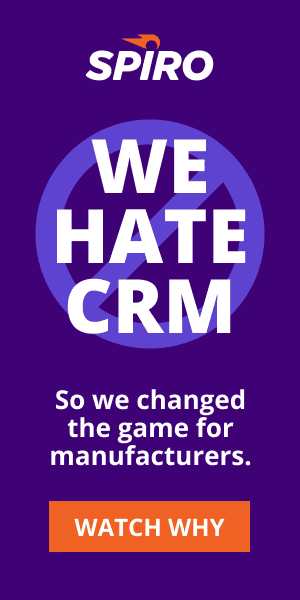3 Numbers All Sales Managers Should Be Obsessed With
Legendary sales reps excel at certain things: relationship building, listening to the customer, articulating the value add, using Spiro’s AI-powered sales automation CRM, and being able to make the hard close.
As a manager, your job is to steer your team in the right direction – helping them go after their best deals and making sense of their pipeline. Let your team focus on selling and you focus on the numbers.
To do this, you need to be able to know your way around a spreadsheet (at least a little bit), and correctly analyze the stats to forecast with accuracy.
But don’t get overwhelmed, just focus on these three numbers all sales managers should be obsessed with:
- Average deal size
- Win rate
- Opportunities created per week
Identifying the Problem
Let’s say you are managing a team with a 1 million dollar quota. If your team’s average deal size is $10,000, then they would need to close 100 deals to meet their baseline quota. 100 deals x $10,000 = $1,000,000
Next, look at your team’s average win rate. If they are winning 40% of their opportunities, that means they would need 250 proposals to make their goal of 100 closes. 40% of 250 proposals = 100 deals
That’s one proposal per business day, assuming your reps don’t take a single day of vacation. When you drill out farther, that is a TON of leads to even achieve 250 proposals! Industry standards say about 25% of leads reach the proposal stage. That means 1,000 leads! 25% of 1,000 leads = 250 proposals
Finding a Solution
When you look at the numbers, the first answer that may come to you is to increase your win rate. Although this seems like the obvious solution, it isn’t necessarily possible. With an industry average win rate of 47%, you can’t expect a rep to be closing 80% of their deals.
Can our reps actually create more opportunities than they already are? At some point there aren’t enough hours in the day or days in the week. It’s physically impossible to contact 2,000 leads.
Since most salespeople can’t swing the pendulum too far one way or the other on some data points, such as lead to proposal conversion rate and win rate, the focus then turns to the third data point – average deal size.
The solution to making your goal is to sell bigger deals and to ruthlessly stop focusing on the small ones. Yes, the small potatoes deals seem easier for your reps to close, but they simply aren’t worth the effort. If you get your team to only focus on opportunities worth $20,000 or higher, and they are able to increase the average deal to $25,000, assuming they continue to close 100 deals, then you can quickly get to $2.5 million! $25,000 x 100 deals = $2,500,000
The other side to this equation is that if one thing goes up, another comes down. If your team is averaging $25,000 deals, then to get to a base goal of $1 million, they only need to close 40 deals. 40 deals x $25,000 = $1,000,000
Will Your Team Hit Their Goal?
Take a few minutes to put all the numbers down on paper. Do the calculations and then get your team together to lay out scenarios in how you can surpass your goal. Understanding the numbers brings clarity to the situation.
It’s not a case of rocket science, but of simple math. And as I mentioned before, some parts of the equation have limited ranges, so focusing on the numbers that don’t have a low ceiling will make the biggest impact on your overall goal. Just think about these sales numbers all sales managers should be obsessed with.
Need a little insight into whether or not you’re going to hit your sales goal? We have created a simple worksheet to help. Input your sales numbers and it will calculate for you if your sales team will hit their goal. Download it here.
And then let your sales team get back to working smarter on what matters, and not harder on what doesn’t.

